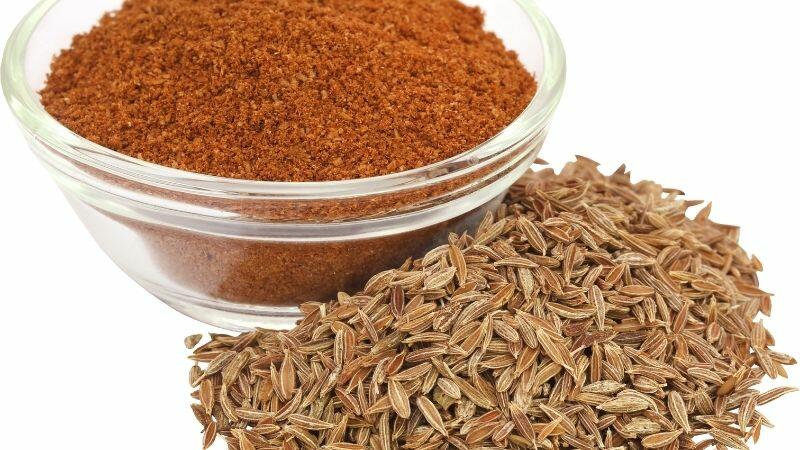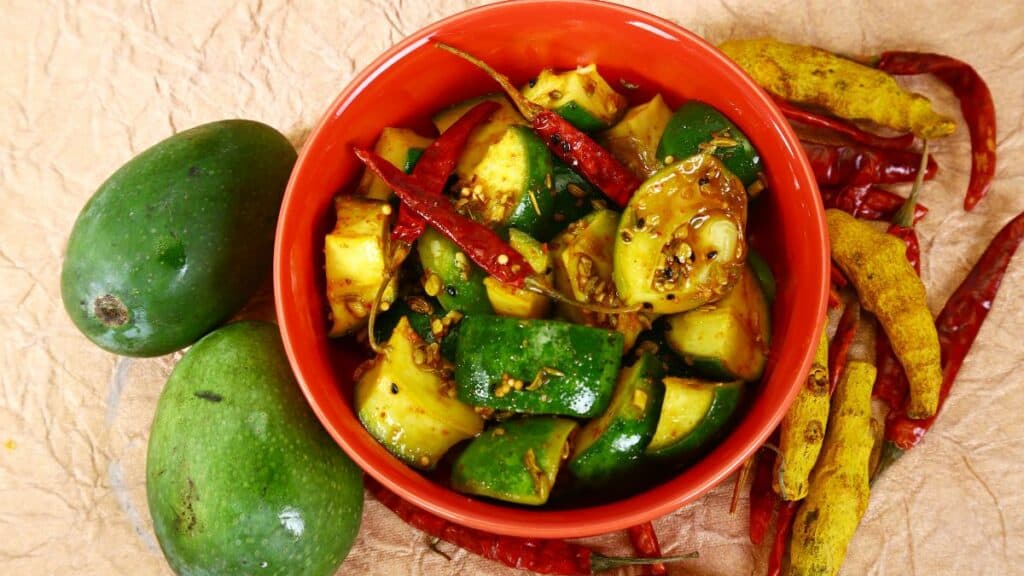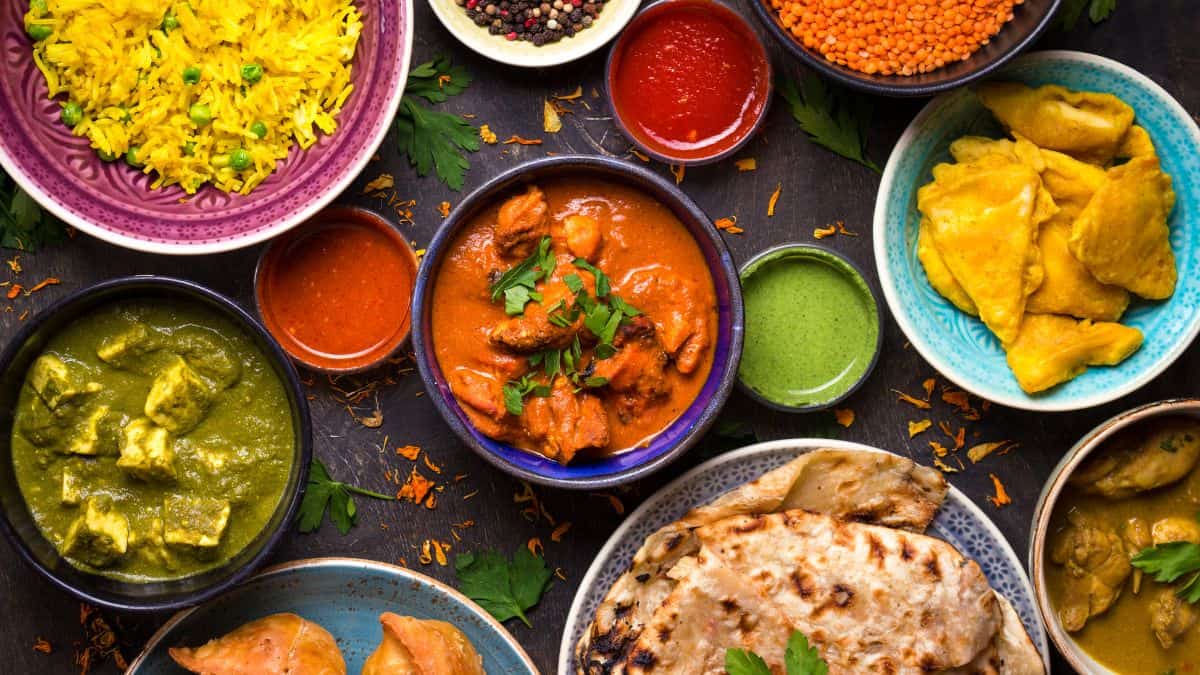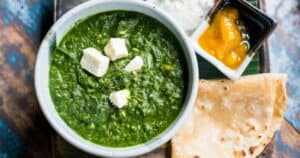Both Indian and Korean food are popular. When trying Indian or Korean food, there’s only one thing to keep in mind: it’s spicy. Really, really spicy. So you might be wondering which is more spicy Indian Food or Korean food? This article will discuss everything you need to know about that in detail.
Indian food is spicier than Korean food. The Nagamese Pork Curry, one of India’s spiciest dishes, employs ghost peppers and has no Korean counterpart. Korean food is not as spicy as many people believe. GOCHUJANG and GOCHUGARU are made with a mild Korean chili pepper with a Scoville rating of less than 2,500.
In 2007, the ghost pepper, India’s hottest pepper, claimed the Guinness World Record for
What Is The Difference Between Korean And Indian Food?
Even though the ingredients in both forms of cuisine are relatively similar, there are some variations between Indian and Korean cuisines. Here are some of the main differences worth mentioning:
Indians Use More Spices Than Koreans

Spices used in Indian cuisine differ significantly from those used in Korean cuisine. Take, for example, curry leaves and other spices that are often used in Indian cuisine. Bay leaves, cumin, coriander, fenugreek, and other spices are among them. This gives Indian food a more robust, intense flavor than Korean food, which is frequently seasoned with fewer spices.
Additionally, you’ll note that Indian cuisines employ a lot of garlic and onions. The former is considered a light dish, while the latter is regarded as a spicy one. There are also changes in the way spices are prepared when they are utilized.
If you like spices, Find some Indian restaurants near you to enjoy a delicious dinner with our list of the best places to eat. From tandoori chicken and saag paneer to chicken tikka masala, there’s something for everyone. Plus, you can get some of your favorite Indian desserts like gulab jamun or kulfi for a sweet treat after dinner.
Cooking Method Is Different In Both Regions
The prevalent cooking methods in these two countries are likewise diverse. Fermenting is a traditional method of processing and preserving food in Korea, particularly vegetables such as daikon, cabbage, radish, and cucumber. They also prefer grilled meats and soups.
Most foods are either slow-cooked or grilled in a tandoori oven in India.
Texture Difference
When comparing the textures of Indian and Korean foods, you’ll notice that Indian food has more heat. The flavors will almost always be deeper and richer. Many of the foods used in Indian cuisine have oils added to them. Foods typically utilized in Korean dishes will have a creamier texture rather than being as oily.
Pork and Beef Are Restricted In India
Pork and beef are heavily consumed in Korea, even though they are prohibited in many parts of India. Their meat preferences differ as well, with Koreans preferring pig and beef and Indians preferring chicken and lamb.
Pork and beef are outlawed in Muslim and Hindu groups, as there are numerous religions in India, each with its own set of dietary restrictions. So Indians use lamb or chicken instead of beef and pork.
Korean Cuisine Includes Rice, Noodles, And Seaweed, While Indian Cuisine Includes Naan Bread And Lentils.
Although rice is common in both cuisines, it appears to play a more significant role in Korean cooking than in Indian cooking. This is because Indians can substitute naan bread or lentil soups for rice in their meals.
On the other hand, rice is a staple of every Korean meal. Noodles are also famous in Korea. However, they’re usually eaten for breakfast, brunch, or snacks. Seaweed, a type of algae that grows in the water, is frequently used in their cuisine.
What Are Some Similar South Korean And Indian Dishes?
Chana Dal Tikki and Gamja-jeon
Gamja-jeon is the simplest Korean food, made simply with the grated potato. The benefit of ‘jeon’ is that they are very customizable; aside from potato, you may add whatever kind of ingredient or stuffing you like.
The Aloo Tikki and Chana Dal Tikki are both popular foods in Saada Desh and are made in the same way.
Achaar and Kimchi

Kimchi is a famous Korean food that can be seen in almost any place. Kimchi is always accessible at practically any Korean restaurant, even if you can’t find anything else. Kimchi is a traditional Korean dish made from fermented and salted vegetables, usually radish or cabbage, and flavored with ginger, garlic, chili powder, and other spices.

Achaar, on the other hand, would be the Indian equivalent of Kimchi. Various vegetables are diced, fermented, and marinated in other Indian spices and edible oils to make pickles or achaar.
Home-Cooked Fried Rice And Kimchi Fried Rice
Both recipes are relatively simple to prepare. Indians make it with leftover rice, leftover veggies, achaar, and a few basic spices, whereas Korean make it with some meat, kimchi, and stir-fried rice and are served with a fried egg.
Gujiya and Yaki Mandu

Mandu is fried Korean dumplings loaded with various fillings such as pork and then cooked. Gujiya is made from all-purpose flour, dry fruits, and khoya, then deep-fried and molded. The primary distinction is that mandus are usually savory, whereas gujiyas are normally sweet.
Which Korean Food Is Popular In India?
Indians enjoy experimenting with food; all they need is information and online recipes to do so. They would not be afraid to experiment with Korean cuisine and add an Indian flavor to it.
Kimchi is a popular Korean side dish that is widely available in India. Kimchi has a distinct pungent and spicy taste and probiotics and vitamin content that is very comparable to the Indian palate. The fact that Kimchi has a flavor and texture that may easily be paired with Indian foods is one of the reasons for its popularity.
The spicy pickled cabbage, which is classified as a superfood, is a source of national pride and is considered the healthiest meal on the planet by some experts. Kimchi is traditionally served with breakfast, lunch, and dinner. People benefit from Kimchi as a pleasant cuisine and as a rich source of antioxidants and cancer-fighting chemicals. This is why Kimchi is considered one of the top five healthiest foods on the planet.
FAQs
Do Indians Love Spicy Food?
Yes, because spices are used in some form or another by most Indian households and professional kitchens. As a result, most savory dishes cooked in practically every country section benefit from this addition’s fiery flavor.
Is Korean Cuisine Popular In India?
The Indian Ministry of Commerce and Industry states that the consumption of Korean food in India has increased dramatically since the 2020 lockdown, with Korean noodles alone seeing a 162 percent increase in volume in 2020 and a 178 percent increase in 2021.
Why Is Indian Tandoori Chicken So Brightly Colored?
Although the spices give color, tandoori chicken’s unique red-orange color comes from the flavorless tandoori coloring, which is manufactured from annatto seed (which also gives some cheeses the orange color).
Conclusion
We now know that Indian food is hotter than Korean food. Korean cuisine comes in various flavors, and not all of them are spicy – many dishes have delicate flavors as well. Whereas Indians use Ghost peppers in most of their dishes, that’s why Indian food is spicier. Hopefully, with the help of our article, you now have in-depth knowledge of Indian and Korean food!





